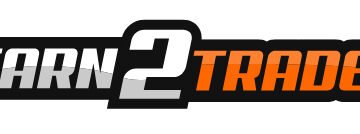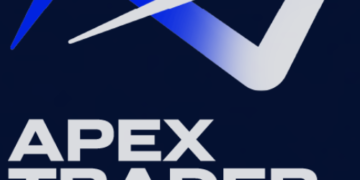Master Institutional Supply and Demand Trading – Ultimate Strategy Guide for Day Traders
Learn how to trade institutional supply and demand zones like a pro. Discover high-probability setups, order flow, and trading psychology. Plus, get an exclusive 80% prop trading evaluation discount at Apex Trader Funding.
Introduction: Why Supply and Demand is the Key to Institutional Trading
Every successful trader eventually learns that the real power in the markets lies not in indicators or guesswork but in supply and demand zones. Institutions—banks, hedge funds, and prop trading firms—cannot hide their footprints. When they place massive orders, they leave clear imbalances on the chart.
This Supply and Demand Ultimate Strategy Guide breaks down institutional trading concepts step by step, teaching traders how to spot these zones, trade them consistently, and avoid emotional mistakes.
And if you’re serious about becoming a consistently profitable trader, there’s even better news: you can practice and prove your edge at a prop trading firm—without risking your own capital.
📢 Exclusive Deal for Readers: Get 80% OFF Apex Trader Funding Evaluations (LIFETIME discount) when you use code PROPDEALS or click here. Pass in as little as 1 day and gain access to up to 20 funded accounts.
Understanding Order Flow: The Market’s True Language
Most retail traders believe price moves because there are “more buyers than sellers.” In reality, that’s not how the markets function. Prices shift due to aggressive orders crossing the spread—buyers hitting the ask or sellers hitting the bid.
- Passive orders sit on the order book (limit orders waiting to be filled).
- Aggressive orders move price by consuming liquidity at each level.
When institutions send through massive orders, price surges, leaving a footprint. Learning to spot these imbalances allows traders to align themselves with institutional order flow rather than fighting against it.
Supply and Demand Zones Explained
Supply and demand zones form when institutions accumulate or distribute orders.
- Demand Zones = areas where large buyers entered, pushing price higher.
- Supply Zones = areas where large sellers stepped in, driving price lower.
The process usually follows four phases:
- Range – Price consolidates as institutions load up orders.
- Initiation – Aggressive buying or selling breaks out.
- Mitigation – Price revisits the zone for unfilled orders.
- Continuation – Trend resumes in the institutional direction.
The most profitable trades come from entering on the pullback to these zones, not chasing the breakout.
How to Draw Institutional Supply and Demand Zones
There are three main types of zones:
- Range Zones – Built from sideways consolidations before breakouts.
- Pivot Zones – Created by single candlestick reversals or engulfing patterns.
- Fractal Refinements – Using wicks or inside bars on lower timeframes for precision.
Pro Tip: A zone is valid only if it causes a clear break of market structure. Without that, it’s just noise.
The 8 Criteria for High-Probability Institutional Zones
Not all supply and demand zones are equal. Professional traders filter for zones that institutions are most likely to defend. Here are the eight key confluences:
- Break of Structure – Zone must cause a significant market break.
- Flip Zone – Area where supply flips to demand or vice versa.
- Liquidity Sweeps – Zones formed after stop hunts signal institutional involvement.
- Inducement – Availability of liquidity for institutions to trade against.
- Higher Timeframe Stacking – Multiple zones aligning across timeframes.
- Multi-Timeframe Alignment – Higher timeframe bias always dominates.
- Premium/Discount Pricing – Buy at a discount (bottom 50%), sell at premium (top 50%).
- Freshness (Unmitigated) – The best zones are untouched and full of resting orders.
The more criteria met, the stronger the probability of continuation.
Entry & Exit Strategies
Entries
- Limit Orders – Place directly on the zone.
- Reversal Candles – Wait for confirmation at the zone.
- Lower Timeframe BOS (Break of Structure) – Adds precision and higher R:R.
Exits
Use a fixed R (risk-to-reward) approach (e.g., 3R target). This helps remove emotion, keeps trading mechanical, and allows probability to play out long-term.
Why Prop Trading is the Fastest Path for Traders
Mastering supply and demand is powerful, but trading your own account can be capital-intensive and risky. That’s why many professionals turn to prop trading firms.
Firms like Apex Trader Funding give traders access to large funded accounts once they pass an evaluation. For beginners and intermediate traders alike, this is one of the best ways to scale quickly without risking personal savings.
📢 Exclusive Deal: Apex Trader Funding 80% Lifetime Discount
Right now, readers of PropTradingDeals.com can access an exclusive 80% lifetime discount at Apex Trader Funding.
🔥 Deal Highlights:
- 💰 80% OFF ALL Evaluations & Future Months
- 🚀 Pass in as little as 1 Day
- 🔄 $50 resets for ALL Evaluations
- 🏆 $140 one-time PA activation fee
- 📈 Up to 20 funded accounts allowed
- 💵 Apex has already paid out over $564 MILLION to traders
🔹 Use Code: PROPDEALS at checkout
🔹 OR Click Here to Start Your Evaluation
👉 Don’t miss this chance to trade like an institution with cheap futures prop firm evaluations.
Conclusion
Mastering institutional supply and demand trading gives traders a true edge. By understanding order flow, spotting high-probability zones, and executing with discipline, day traders can finally trade with institutions rather than against them.
Pair this knowledge with a top-tier prop firm, and the potential to scale becomes limitless.
📢 Ready to test your skills? Start Your Evaluation Today with Apex (80% OFF) and trade like an elite.
Why Supply and Demand Trading Matters
The Institutional Edge
Institutional traders don’t chase indicators. Instead, they:
- Identify accumulation and distribution zones.
- Buy at wholesale (demand zones) and sell at retail (supply zones).
- Exploit retail traders’ emotional mistakes.
By mastering supply and demand trading, a retail trader can finally align with institutional order flow rather than fighting against it.
The Retail Trap
Most retail traders:
- Use lagging indicators.
- Enter late after the move has started.
- Stop out at institutional levels where banks accumulate positions.
This guide equips traders with tools to break out of that cycle.
Key Concepts of Institutional Supply and Demand Trading
1. Understanding Imbalances
Supply and demand zones are not random. They form where institutional orders remain unfilled. These imbalances create:
- Sharp reversals.
- Strong continuation moves.
- Areas of high-probability setups.
2. Fresh vs. Tested Zones
- Fresh Zone: Price has never returned since creation – higher probability.
- Tested Zone: Price revisits – lower probability but can still hold with confluence.
3. Confluence with Volume & Order Flow
Combining supply/demand zones with:
- Volume Profile (to identify high/low volume nodes).
- Footprint Charts (to see absorption & imbalances).
- Liquidity Pools (where retail stops cluster).
4. Multiple Time Frame Analysis
- Higher timeframe zones = institutional footprints.
- Lower timeframe entries = precise scalping opportunities.
Step-by-Step Strategy to Trade Institutional Supply and Demand
Step 1: Identify Institutional Zones
- Look for explosive moves away from a base.
- Confirm with imbalance candles (large displacement, minimal wicks).
Step 2: Mark Zones Accurately
- Draw supply above current price where selling pressure dominated.
- Draw demand below current price where buying pressure dominated.
Step 3: Wait for Price to Return
Patience is key. Institutions often:
- Return to zones to fill unfilled orders.
- Fake out retail before the real move.
Step 4: Refine Entry with Lower Time Frames
- Drop from H1/H4 to M1/M5 for entry.
- Look for absorption, delta shifts, or trapped traders.
Step 5: Execute with Strict Risk Management
- Place stop just beyond the zone.
- Target opposing zone or liquidity pool.
Common Mistakes to Avoid
- Trading tested zones without confirmation.
- Ignoring higher timeframe institutional footprints.
- Entering without confluence (volume, order flow, liquidity).
- Using wide stops that increase risk.
Why Combine Supply & Demand with Prop Trading?
Trading institutional setups is powerful—but combining them with a prop firm evaluation discount makes it even better. Instead of risking personal capital, traders can:
- Trade firm capital.
- Scale faster.
- Reduce personal risk.
And with Apex Trader Funding’s cheap futures prop firm evaluations, the path to becoming a funded trader is easier than ever.
📢 Apex Trader Funding Exclusive Offer
🔥 80% OFF Apex Trader Funding Evaluations – Pass in 1 Day! 🔥
- 💰 80% OFF ALL Evaluations & Future Months
- 💰 Pass in just 1 day!
- 💰 $50 resets for ALL Evaluations
- 💰 $140 one-time PA activation fee
- 💰 Take unlimited evaluations – up to 20 funded accounts!
- 🔥 Apex has already paid out over $564 MILLION to traders!
👉 Use Code: PROPDEALS at checkout
👉 Click Here to Start Your Evaluation
Save Now. Get Your Discount. Start Your Evaluation Today.
Conclusion
Mastering institutional supply and demand trading transforms a retail trader into a strategic, disciplined operator who trades alongside the big players—not against them. With the right knowledge, patience, and confluence tools, traders can capitalize on high-probability setups.
And with firms like Apex Trader Funding offering lifetime prop trading evaluation discounts, traders can scale their strategies with confidence and professional funding.
✅ Learn the setups. ✅ Trade like institutions. ✅ Get funded with 80% off evaluations.






No Comments
Leave Comment